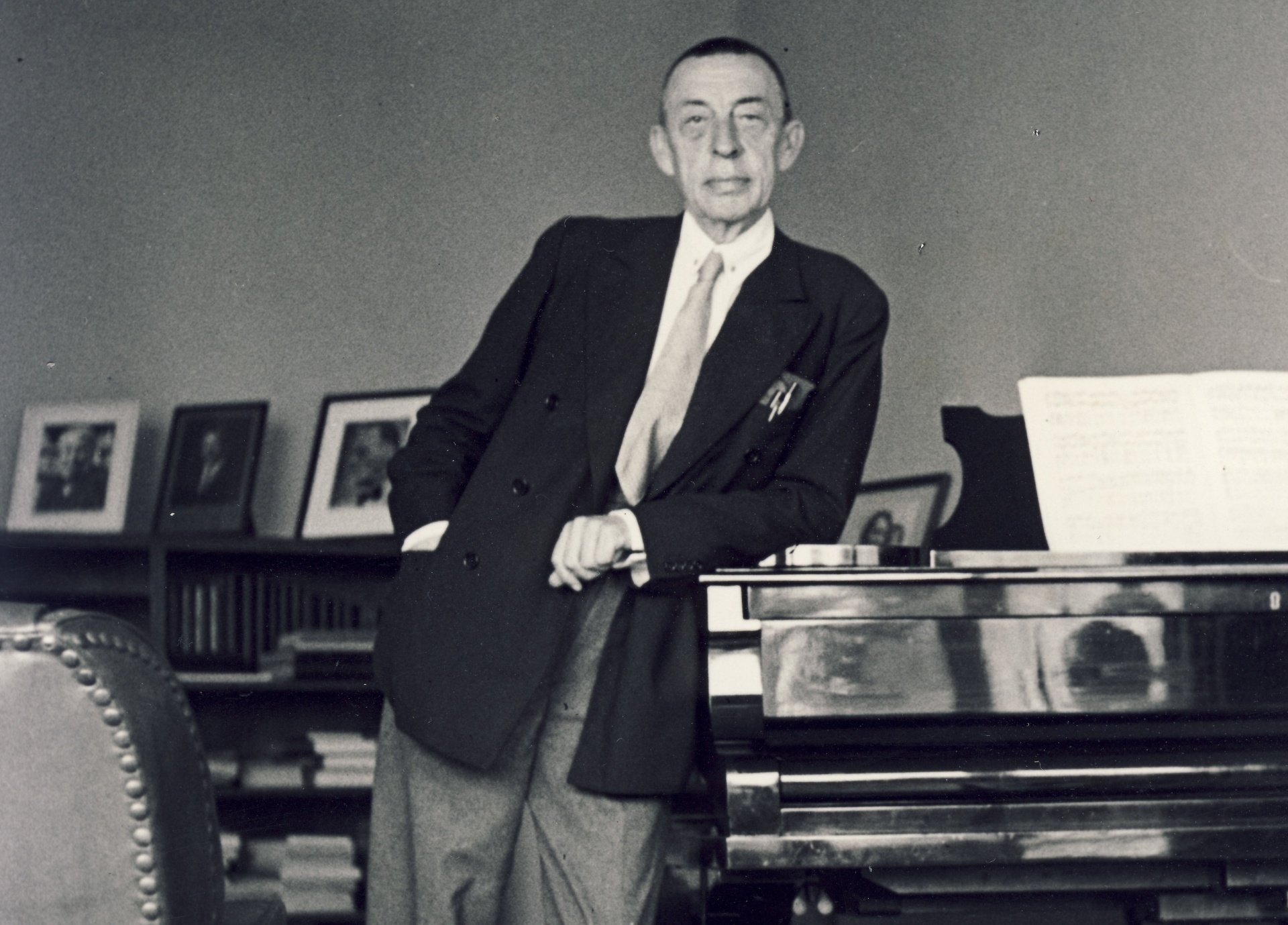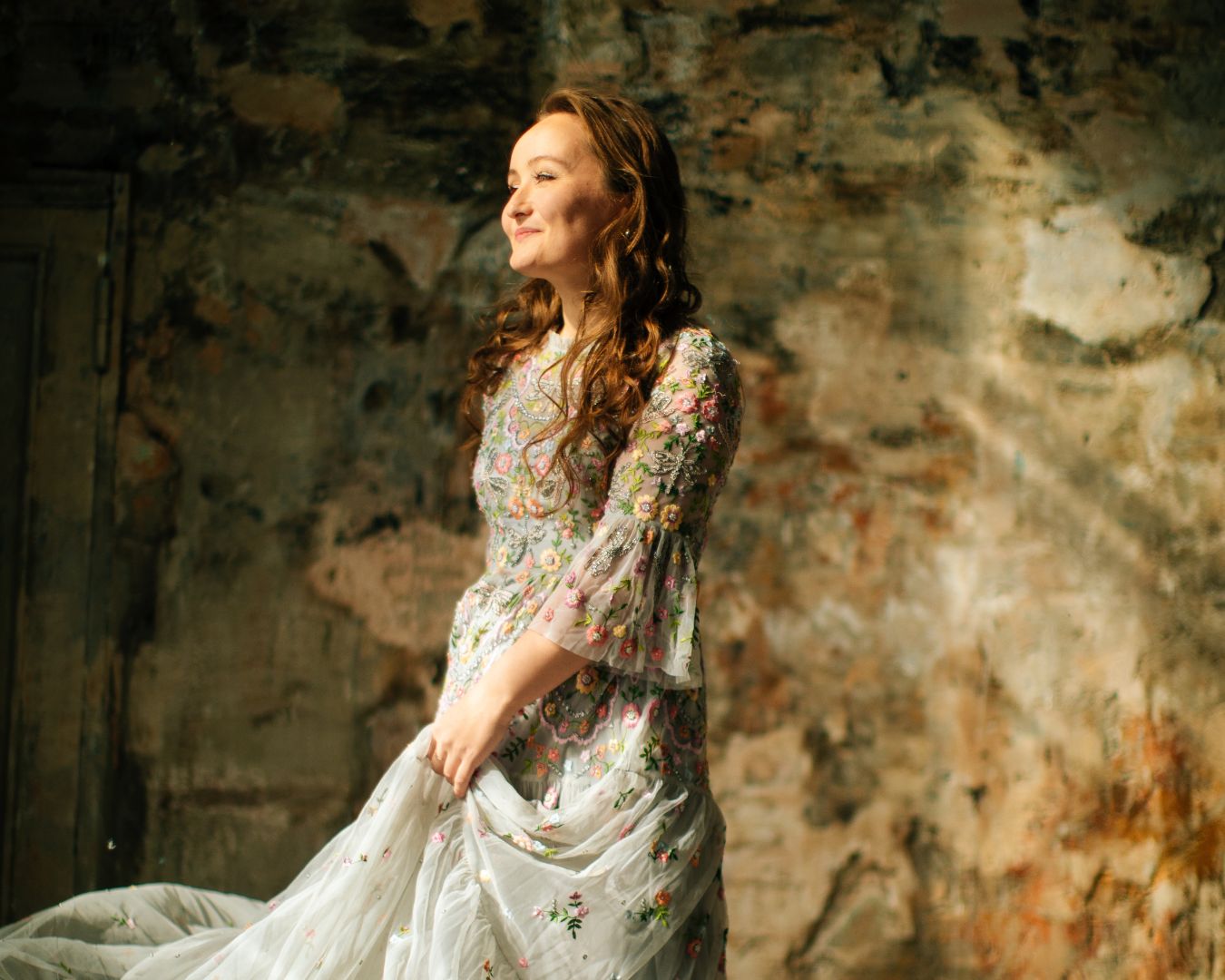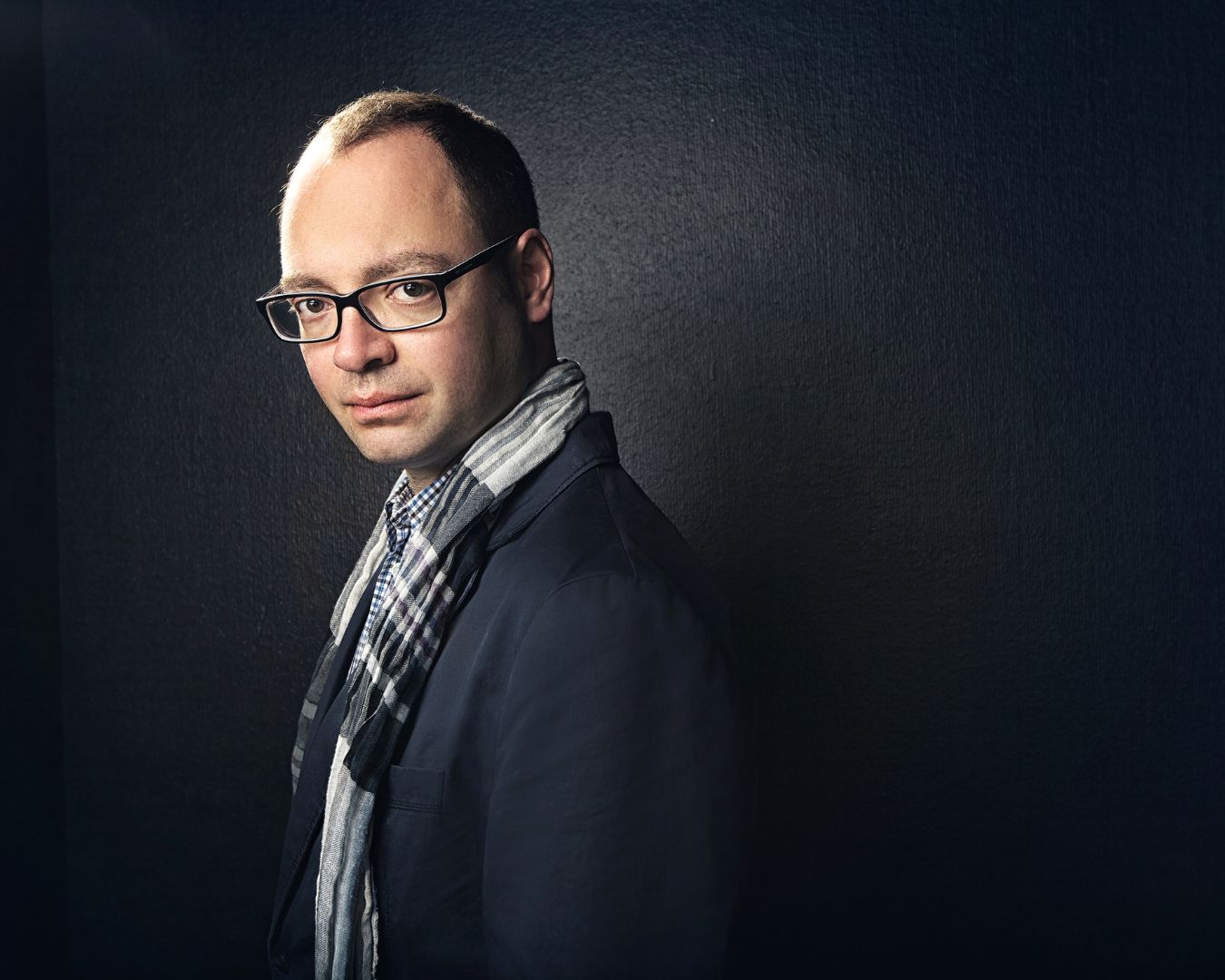Julia Lezhneva Soprano
Alexander Melnikov Piano
Program
Sergei Rachmaninoff (1873–1943)
Veter perelëtnyj (The Migrant Wind) Op. 34 No. 4 (Balmont)
Kol’co (The Ring) Op. 26 No. 14 (Koltsov)
Siren’ (Lilacs) Op. 21 No. 5 (Beketova)
Ja opjat’ odinok (Again, I Am Alone) Op. 26 No. 9 (Bunin)
U moego okna (Before My Window) Op. 26 No. 10 (Galina)
Ja ne prorok (I Am No Prophet) Op. 21 No. 11 (Kruglov)
from Préludes for Piano Op. 32
No. 5 in G major
No. 10 in B minor
No. 12 in G-sharp minor
My otdochnëm (We Shall Rest) Op. 26 No. 3 (Chekhov)
Christos voskres (Christ Is Risen) Op. 26 No. 6 (Merezhkovsky)
Na smert’ čižika (On the Death of a Siskin) Op. 21 No. 8 (Zhukovsky)
Zdes’ chorošo (Here It Is So Fine) Op. 21 No. 7 (Galina)
Burja (The Storm) Op. 34 No. 3 (Pushkin)
Intermission
Sumerki (Twilight) Op. 21 No. 3 (Tkhorshevsky)
Muzyka (Music) Op. 34 No. 8 (Polonsky)
Margaritki (Daisies) Op. 38 No. 3 (Severyanin)
Otryvok iz A. Mjusse (Fragment from A. Musset) Op. 21 No. 6 (Apukhtin)
from Études-Tableaux for Piano Op. 39
No. 6 in A minor
No. 7 in C minor
Ne možet byt’ (It Cannot Be) Op. 34 No. 7 (Maykov)
Noč’ pečal’na (The Night Is Mournful) Op. 26 No. 12 (Bunin)
Melodija (Melody) Op. 21 No. 9 (Nadson)
Arion Op. 34 No. 5 (Pushkin)
Son (Dream) Op. 38 No. 5 (Sologub)
One otvečali (They answered) Op. 21 No. 4 (Mey)
Encores
Wolfgang Amadeus Mozart: “Voi che sapete” from Le nozze di Figaro
Mikhail Glinka: Ja pomnju čudnoe mgnoven’e (I Remember a Wondrous Moment)
Pyotr Tchaikovsky: Sred’ šumnogo bala (In the Din of the Ball) Op. 38 No. 3
 Sergei Rachmaninoff at Villa Senar, his Swiss summer home on Lake Lucerne, where Julia Lezhneva and Alexander Melnikov recorded most of tonight's program last year. (© Serge Rachmaninoff Foundation)
Sergei Rachmaninoff at Villa Senar, his Swiss summer home on Lake Lucerne, where Julia Lezhneva and Alexander Melnikov recorded most of tonight's program last year. (© Serge Rachmaninoff Foundation)
The Art of the Russian Romance
When Western audiences encounter Russian music, it is typically in the opera house or at a symphony concert. Which orchestra would not want to program at least some of Tchaikovsky’s six symphonies, Prokofiev’s seven, or Shostakovich’s 15? Yet the form in which most Russian composers have excelled remains largely unfamiliar: the song—or romance, as it is known in Russian—has been every bit as central to Russian cultural life as the lied has been in the German-speaking world, or the mélodie in France.
Essay by Philip Ross Bullock
The Art of the Russian Romance
Songs and Piano Works by Sergei Rachmaninoff
Philip Ross Bullock
When Western audiences encounter Russian music, it is typically in the opera house or at a symphony concert. Tchaikovsky’s Eugene Onegin and The Queen of Spades, Mussorgsky’s Boris Godunov, Shostakovich’s Lady Macbeth of Mtsensk, and Prokofiev’s War and Peace are staged regularly around the world, and which orchestra would not want to program at least some of Tchaikovsky’s six symphonies, Prokofiev’s seven, or Shostakovich’s 15, not to mention tone poems such as Tchaikovsky’s Romeo and Juliet, or Mussorgsky’s Night on Bald Mountain? When it comes to the concerto repertoire, soloists have the pick of masterpieces by Tchaikovsky, Prokofiev, and Shostakovich.
Yet the form in which most Russian composers have excelled—song—remains largely unfamiliar. The song—or romance, as it is known in Russian—has been every bit as central to Russian cultural life as the lied has been in the German-speaking world, or the mélodie in France. As with those, the Russian romance is intimately linked to developments in literature. It emerged in the first half of the 19th century, when poetry was the preeminent literary form. This was the so-called Golden Age, the era of Alexander Pushkin and Mikhail Lermontov, and their musical counterpart was Mikhail Glinka, whom Pyotr Tchaikovsky would later describe as “the acorn from which the oak of Russian music sprang.” Nationalist histories have often emphasized Glinka’s debt to folk culture, but in truth, his style was honed during the four years he spent in Milan and Berlin. When he returned to St. Petersburg in 1834, he became a fixture of the city’s salons, performing his own songs to the delight of Russia’s social elite.
Tchaikovsky followed in Glinka’s footsteps, abandoning a career in Russia’s civil service to study at the newly founded St. Petersburg Conservatory in 1862. His 100 or so romances would have surprised those who knew him as a young man. One friend recalled his determination “never to write any small pieces for piano, or songs. He spoke of the latter with the greatest dislike.” Yet Tchaikovsky could be inconsistent, as that same friend noted: “The next minute he was growing enthusiastic over the songs of Glinka, Schumann, or Schubert.” Their appeal was not just a creative one. Songs were popular with the many talented amateurs who lived across the Russian Empire, and Tchaikovsky’s publisher commissioned as many as he could, certain in the knowledge that they would sell well. Tchaikovsky—always short of money and inclined to indulgence—willingly complied.
Enter Rachmaninoff
Although Sergei Rachmaninoff never studied with Tchaikovsky, it was clear that he was the older composer’s anointed successor. When his student opera Aleko (based on Pushkin’s narrative poem The Gypsies) was premiered at Moscow’s Bolshoi Theatre in May 1892, Tchaikovsky was in the audience, ostentatiously applauding the young composer. Tchaikovsky’s sudden death in the autumn of 1893 robbed Rachmaninoff of an important mentor and patron—yet it also cleared the way for him to become Russia’s most celebrated living musician. As an impecunious artist embarking on an uncertain professional career, he needed a reliable source of income. Accordingly, he signed a contract with the publisher Gutheil, to whom he stayed loyal until he left Russia in 1917.
The earliest works that Rachmaninoff published comprised piano miniatures such as the Cinq Morceaux de Fantasie Op. 3 (including the ubiquitous Prelude in C-sharp minor), the Six Morceaux de Salon Op. 10, and the Six Moments Musicaux Op. 16, all of which were astutely pitched at the amateur market. He also produced three collections of solo songs that built directly on the legacy of Tchaikovsky. In the Six Romances Op. 4, the Six Romances Op. 8 (both 1893), and the 12 Romances Op. 14 (1896), he not only refined the lyrical style associated with Tchaikovsky (and before him Glinka), he even set some of the same poets, and on some occasions even the same texts.
New Directions
The image of Rachmaninoff as a conservative figure, nostalgically dreaming of the lost world of 19th-century Romanticism is a persistent one. It is not without a grain of truth, yet it also overlooks his subtle responsiveness to new influences. After the disastrous premiere of his Symphony No. 1 in St. Petersburg in March 1897, he withdrew the score and fell into a compositional silence that lasted several years. A course of therapy with the physician Nikolay Dahl dispelled his depression, and his marriage in 1902 to his first cousin, Natalia Satina, provided him with companionship, understanding, and two much-loved daughters, Irina and Tatiana.
The works written around this time were among the most ambitious he had yet composed—the Suite No. 2 for Two Pianos, the Piano Concerto No. 2, the Sonata for Cello and Piano, the Variations on a Theme of Chopin, and his set of 12 Romances Op. 21. Most of these songs were written in the spring of 1902, and the handsome fee that he received from his publisher went to pay for the three-month honeymoon that he and Natalia took to Austria, Germany, Italy, and Switzerland. But there is more to the songs than financial expediency. After the failure of his debut symphony, Rachmaninoff had been engaged as a conductor for Mamontov’s Private Opera in Moscow. There, he met the great dramatic bass Fyodor Chaliapin, whom he prepared in the title role of Mussorgsky’s Boris Godunov. Untutored and unruly, Mussorgsky had turned his back on the polished grace of Glinka and Tchaikovsky, seeking instead to convey the essence of living, human speech. Each of his songs is a miniature dramatic scena that reflects the truthfulness of life rather than the conventions of art.
Mussorgsky’s influence on Rachmaninoff emerges most audibly in the operatic swagger of Fragment from A. Musset and I Am Not a Prophet. Yet even as he learned from Mussorgsky’s scrupulous attitude to the weight of every syllable and word, Rachmaninoff never renounced his feeling for emotional interiority. There is a charming sentimentality about On the Death of a Siskin, just as Melody is suffused with a smoldering ardor. Its flowing piano lines, like those of They Answered remind us that Rachmaninoff was a virtuoso pianist. He was also a landowner, dedicated to overseeing his wife’s country estate of Ivanovka, near Tambov. Twilight and Lilacs celebrate his fondness for the Russian landscape, and Here It Is So Fine paints a delicate musical portrait of Natalia, to whom the song is dedicated.
Two Musical Women
Rachmaninoff returned to song in 1906. He had spent the previous years at the Bolshoi Theatre, where he conducted premieres of his own operas The Miserly Knight and Francesca da Rimini. Exhausted and seeking new inspiration, he embarked on a sabbatical in Dresden, remaining there until 1909. The costs of the move were defrayed by a timely commission from Arkady and Maria Kerzin, patrons of a concert series in Moscow. The 15 Romances Op. 26 were dashed off in just four weeks. As befits a composer who had been so active in the opera house and who had worked with so many of Russia’s leading singers, many of them are decidedly dramatic. We Will Rest sets Sonya’s final solemn monologue from Chekhov’s Uncle Vanya, and The Ring is a miniature scena in its own right, vividly conjuring up the world of traditional folk belief. Rachmaninoff was generally reserved when it came to matters of politics, yet the choice of Christ Is Risen hints at a sense of disillusion at the state of Russian society in the wake of the 1905 revolution, while Again, I Am Alone voices a bleak sense of existential isolation. In Outside My Window and Mournful Is the Night, Rachmaninoff bade a nostalgic farewell to the homeland he was shortly to leave, albeit temporarily.
Many of the texts for these songs had been proposed by Maria Kerzina, but that did not prevent some from criticizing what they took to be Rachmaninoff’s middlebrow literary taste. In the spring of 1912, he received a letter from an anonymous admirer who signed herself simply as “Re” (the musical note “D”). This was a budding symbolist poet, Marietta Shaginyan, who set about refreshing Rachmaninoff’s choice of texts, although he did not always take well to her suggestions. Thanking her for an anthology of contemporary verse, he declared, “I like some of it, but I am horrified by most of the poems.” Yet her influence on the 15 Romances Op. 34 was profound. There are powerful interpretations of philosophical poems by Pushkin—The Storm and Arion—as well as a restrained response to the Parnassian lyrics of Yakov Polonsky’s Music, and a tersely flamboyant setting of Apollon Maikov’s It Cannot Be. The Migrant Wind, to words by Konstantin Balmont, was one of Rachmaninoff’s first concessions to modern poetry.
The songs mark a transformation in his musical style too. Like the first set of the Études-Tableaux for solo piano that immediately preceded them, they explore a language that is rather more modernist than Rachmaninoff’s late-romantic reputation suggests. This development was taken yet further in the Six Poems Op. 38, again to lyrics suggested by Shaginyan. Written between September and November 1916, they take six verses by leading contemporary poets, although Rachmaninoff treats them with thoughtful sensitivity rather than self-conscious experimentalism. He was, after all, no Arnold Schoenberg or Igor Stravinsky. It was, famously, Stravinsky, who described Rachmaninoff as “a six-and-a-half-foot scowl,” but Daisies reminds us that Rachmaninoff had the gentlest sense of humor, and Dream hints at emotions that cannot easily be reduced to words.
Songs without Words
The Six Poems were to be Rachmaninoff’s last songs. Emigration severed the creative connection to language and to landscape that had inspired him so profoundly beforehand. What sustained him above all was his pianism, and he regularly programmed his own solo compositions in the thousands of recitals he gave right up until his death on March 28, 1943. He wrote his first prelude (the aforementioned in C-sharp minor) in 1892, later adding 23 more—one in each major and minor key—just as Frédéric Chopin had done before him. The G-major and G sharp–minor Preludes, heard as part of tonight’s program, demonstrate just how eloquently Rachmaninoff could make the piano “sing.” The Prelude in B minor is said to have been inspired by The Homecoming, a canvas by Arnold Böcklin (who also inspired the symphonic poem The Isle of the Dead). That visual impulse is present as well in the two books of Études-Tableaux Opp. 33 and 39, written in 1911 and in 1916–7, respectively. They are also brilliant technical studies. Op. 39 No. 6, in A minor, is a bravura exercise in passage work that Rachmaninoff later claimed evoked the story of Little Red Riding Hood and the Wolf. In No. 7, in C minor, the ever fatalistic composer summoned up the atmosphere of a solemn funeral procession.
Philip Ross Bullock is Professor of Russian Literature and Music at the University of Oxford. He is the author of Pyotr Tchaikovsky (London, 2016) and the editor of Rachmaninoff and His World (Chicago, 2022).
The Artists

Julia Lezhneva
Soprano
Born on the Russian island of Sakhalin to two geophysicists, Julia Lezhneva graduated from Moscow’s Tchaikovsky Conservatory. In 2009, she became the youngest winner in the history of the Paris Opera Competition; two years later, Opernwelt magazine named her “Young Singer of the Year.” Since then, she has made regular appearances with orchestras such as the Deutsche Kammerphilharmonie Bremen, the Gewandhaus Orchestra, and the Orquesta Nacional de España, as well as at the festivals of Salzburg, Lucerne, Schwetzingen, Schleswig-Holstein, the Salzburg Mozart Week, and Bayreuth Baroque. She has been highly acclaimed for her performances at the Hamburg State Opera, among many other venues, where she made her debut as Morgana in Handel’s Alcina and has since appeared in Agrippina, Rossini’s Il barbiere di Siviglia, and Mozart’s Don Giovanni and Le nozze di Figaro. Other highlights of recent seasons have included debuts with the Berliner Philharmoniker, the Bavarian Radio Symphony Orchestra, at the Vienna Musikverein, and at Milan’s La Scala in Nicola Porpora’s Carlo il Calvo. Julia Lezhneva has won international acclaim for her numerous recordings, collaborating with artists such as Franco Fagioli, Diego Fasolis, Emanuel Cencic, and Philippe Jaroussky as well as Il giardino armonico and I barocchisti, among other ensembles. Her latest album, Visiting Rachmaninoff, is dedicated to songs by the Russian composer which she recorded with Alexander Melnikov at Rachmaninoff’s Villa Senar near Lucerne.
October 2025

Alexander Melnikov
Piano
Alexander Melnikov studied with Lev Naumov at Moscow’s Tchaikovsky Conservatory. His encounter with Sviatoslav Richter had a major influence on his artistic development. Exploring period performance practice early in his career, he received important guidance from Andreas Staier and Alexej Lubimov and regularly performs with ensembles such as Akademie für Alte Musik Berlin, the Freiburg Baroque Orchestra, and the Orchestre des Champs-Élysées. As a soloist, he has appeared with Amsterdam’s Concertgebouw Orchestra, the Leipzig Gewandhaus Orchestra, Hamburg’s NDR Elbphilharmonie Orchestra, the London Philharmonic, Philadelphia Orchestra, and the Mahler Chamber Orchestra, collaborating with conductors including Mikhail Pletnev, Teodor Currentzis, and Paavo Järvi. Among his regular chamber music partners are Jean-Guihen Queyras and Isabelle Faust, with whom he has recorded Beethoven’s complete violin sonatas, a project that won him a Gramophone Award and a Grammy nomination. Highlights of the current season include appearances with the NDR Elbphilharmonie Orchestra, the Oslo Philharmonic Orchestra, the Orchestre de Chambre de Paris, and with the Akademie für Alte Musik Berlin at the Pierre Boulez Saal, performing Emilie Mayer’s piano concerto later this month.
October 2025